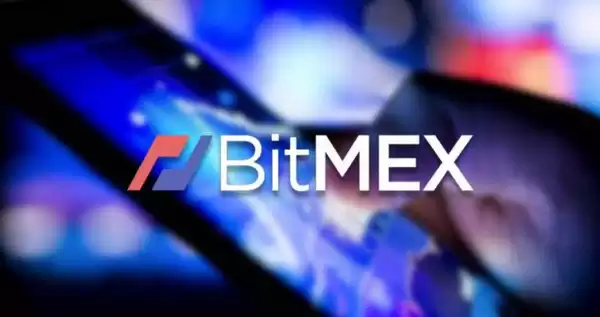-
 Bitcoin
Bitcoin $113600
-0.89% -
 Ethereum
Ethereum $3589
-2.33% -
 XRP
XRP $2.932
-4.03% -
 Tether USDt
Tether USDt $1.000
0.03% -
 BNB
BNB $749.6
-1.98% -
 Solana
Solana $163.0
-3.40% -
 USDC
USDC $1.000
0.02% -
 TRON
TRON $0.3322
-0.70% -
 Dogecoin
Dogecoin $0.1980
-4.93% -
 Cardano
Cardano $0.7186
-4.54% -
 Hyperliquid
Hyperliquid $37.47
-2.40% -
 Stellar
Stellar $0.3903
-5.01% -
 Sui
Sui $3.390
-4.44% -
 Bitcoin Cash
Bitcoin Cash $554.6
-3.01% -
 Chainlink
Chainlink $16.20
-4.35% -
 Hedera
Hedera $0.2354
-5.05% -
 Ethena USDe
Ethena USDe $1.001
0.01% -
 Avalanche
Avalanche $21.79
-4.49% -
 Litecoin
Litecoin $118.6
-2.39% -
 UNUS SED LEO
UNUS SED LEO $9.003
0.58% -
 Toncoin
Toncoin $3.166
-6.57% -
 Shiba Inu
Shiba Inu $0.00001200
-3.59% -
 Uniswap
Uniswap $9.486
-4.51% -
 Polkadot
Polkadot $3.596
-2.54% -
 Dai
Dai $1.000
0.01% -
 Monero
Monero $289.7
-3.54% -
 Bitget Token
Bitget Token $4.271
-2.32% -
 Cronos
Cronos $0.1386
-0.92% -
 Pepe
Pepe $0.00001007
-5.23% -
 Aave
Aave $253.1
-4.66%
How to adjust leverage on BitMEX
By adjusting the "Max Leverage" setting in the BitMEX settings page, traders can set a suitable leverage level for their risk tolerance and trading strategy.
Nov 10, 2024 at 09:38 pm

How to Adjust Leverage on BitMEX: A Comprehensive Guide
Understanding Leverage and Its Significance on BitMEX
Leverage is a double-edged sword that amplifies both profits and losses in the world of cryptocurrency trading. BitMEX, one of the leading cryptocurrency derivatives exchanges, provides traders with the ability to employ leverage of up to 100x, enabling them to potentially multiply their returns. However, it's crucial to approach leverage with caution, as it can also lead to substantial losses if not handled responsibly.
Step-by-Step Guide: Adjusting Leverage on BitMEX
1. Log into Your BitMEX Account:
Access your BitMEX account by entering your login credentials. Ensure that you're using a secure connection and that your account is protected with strong authentication measures.
2. Navigate to the "Settings" Section:
Once logged in, locate the "Settings" menu in the top-right corner of the BitMEX platform. Click on "Settings" to access your account settings page.
3. Adjust the "Max Leverage" Setting:
Within the "Settings" page, you'll find a section labeled "Max Leverage." This setting determines the maximum leverage that you can apply to your trades on BitMEX. Defaults to 1x, meaning no leverage.
4. Select a Leverage Level:
Carefully consider the leverage level that you want to use. Higher leverage increases potential profits but amplifies losses. Choose a level that aligns with your risk tolerance and trading strategy.
5. Enter the Desired Leverage Value:
Input the desired leverage value in the "Max Leverage" field. Remember that the leverage value cannot exceed the maximum leverage allowed on BitMEX, which is currently 100x.
Note:
- The leverage setting applies to all open positions on your BitMEX account.
- It's recommended to adjust leverage before opening any new positions.
- Changes to leverage settings take effect immediately.
Additional Considerations for Safe Leverage Management
1. Understand the Risks:
Thoroughly understand the risks associated with leverage trading before engaging in it. Leverage amplifies both profits and losses, and it's possible to lose more than your initial investment.
2. Practice Risk Management Techniques:
Implement sound risk management practices such as stop-loss orders, position sizing, and margin management to mitigate potential losses.
3. Monitor Your Positions Closely:
Keep a watchful eye on your open positions, especially when using leverage. Monitor market conditions and adjust your positions accordingly to manage risk.
4. Use Leverage Conservatively:
Avoid using excessive leverage, especially if you're a novice trader. Start with a lower leverage and gradually increase it as you gain experience and develop a profitable trading strategy.
5. Avoid Emotional Trading:
Never trade based on emotions or FOMO (fear of missing out). Stick to your trading plan and adjust leverage rationally, not impulsively.
Disclaimer:
Leverage trading on BitMEX involves substantial risk. It's essential to approach leverage with caution, practice proper risk management techniques, and trade responsibly.
Disclaimer:info@kdj.com
The information provided is not trading advice. kdj.com does not assume any responsibility for any investments made based on the information provided in this article. Cryptocurrencies are highly volatile and it is highly recommended that you invest with caution after thorough research!
If you believe that the content used on this website infringes your copyright, please contact us immediately (info@kdj.com) and we will delete it promptly.
- DeriW Mainnet: Zero Gas Fees Revolutionize On-Chain Derivatives Trading
- 2025-08-06 10:30:11
- IOTA, Cloud Mining, and Eco-Friendly Crypto: A New York Investor's Take
- 2025-08-06 10:30:11
- Kaspa (KAS) Price Prediction: August 6 - Will It Break Free?
- 2025-08-06 10:50:12
- Meme Coin Mania: Arctic Pablo's Token Burn Ignites Presale Frenzy
- 2025-08-06 10:50:12
- Pi Network, Holders, and Market Turbulence: Navigating the Crypto Storm
- 2025-08-06 10:55:12
- XRP, DOGE, and the Altcoin Darling Dilemma: Where's the Alpha?
- 2025-08-06 08:30:11
Related knowledge

Why is my Bitstamp futures position being liquidated?
Jul 23,2025 at 11:08am
Understanding Futures Liquidation on BitstampFutures trading on Bitstamp involves borrowing funds to open leveraged positions, which amplifies both po...

How to report Bitstamp futures for taxes?
Jul 30,2025 at 08:35am
Understanding Bitstamp Futures and Taxable EventsWhen trading Bitstamp futures, it’s essential to recognize that these financial instruments are treat...

Does Bitstamp offer inverse contracts?
Jul 23,2025 at 01:28pm
Understanding Inverse Contracts in Cryptocurrency TradingIn the realm of cryptocurrency derivatives, inverse contracts are a specific type of futures ...

What is the difference between futures and perpetuals on Bitstamp?
Jul 27,2025 at 05:08am
Understanding Futures Contracts on BitstampFutures contracts on Bitstamp are financial derivatives that allow traders to speculate on the future price...

How to find your Bitstamp futures trade history?
Jul 23,2025 at 08:07am
Understanding Bitstamp and Futures Trading AvailabilityAs of the current state of Bitstamp’s service offerings, it is critical to clarify that Bitstam...

Can I use a trailing stop on Bitstamp futures?
Jul 23,2025 at 01:42pm
Understanding Trailing Stops in Cryptocurrency TradingA trailing stop is a dynamic type of stop-loss order that adjusts automatically as the price of ...

Why is my Bitstamp futures position being liquidated?
Jul 23,2025 at 11:08am
Understanding Futures Liquidation on BitstampFutures trading on Bitstamp involves borrowing funds to open leveraged positions, which amplifies both po...

How to report Bitstamp futures for taxes?
Jul 30,2025 at 08:35am
Understanding Bitstamp Futures and Taxable EventsWhen trading Bitstamp futures, it’s essential to recognize that these financial instruments are treat...

Does Bitstamp offer inverse contracts?
Jul 23,2025 at 01:28pm
Understanding Inverse Contracts in Cryptocurrency TradingIn the realm of cryptocurrency derivatives, inverse contracts are a specific type of futures ...

What is the difference between futures and perpetuals on Bitstamp?
Jul 27,2025 at 05:08am
Understanding Futures Contracts on BitstampFutures contracts on Bitstamp are financial derivatives that allow traders to speculate on the future price...

How to find your Bitstamp futures trade history?
Jul 23,2025 at 08:07am
Understanding Bitstamp and Futures Trading AvailabilityAs of the current state of Bitstamp’s service offerings, it is critical to clarify that Bitstam...

Can I use a trailing stop on Bitstamp futures?
Jul 23,2025 at 01:42pm
Understanding Trailing Stops in Cryptocurrency TradingA trailing stop is a dynamic type of stop-loss order that adjusts automatically as the price of ...
See all articles

























































































